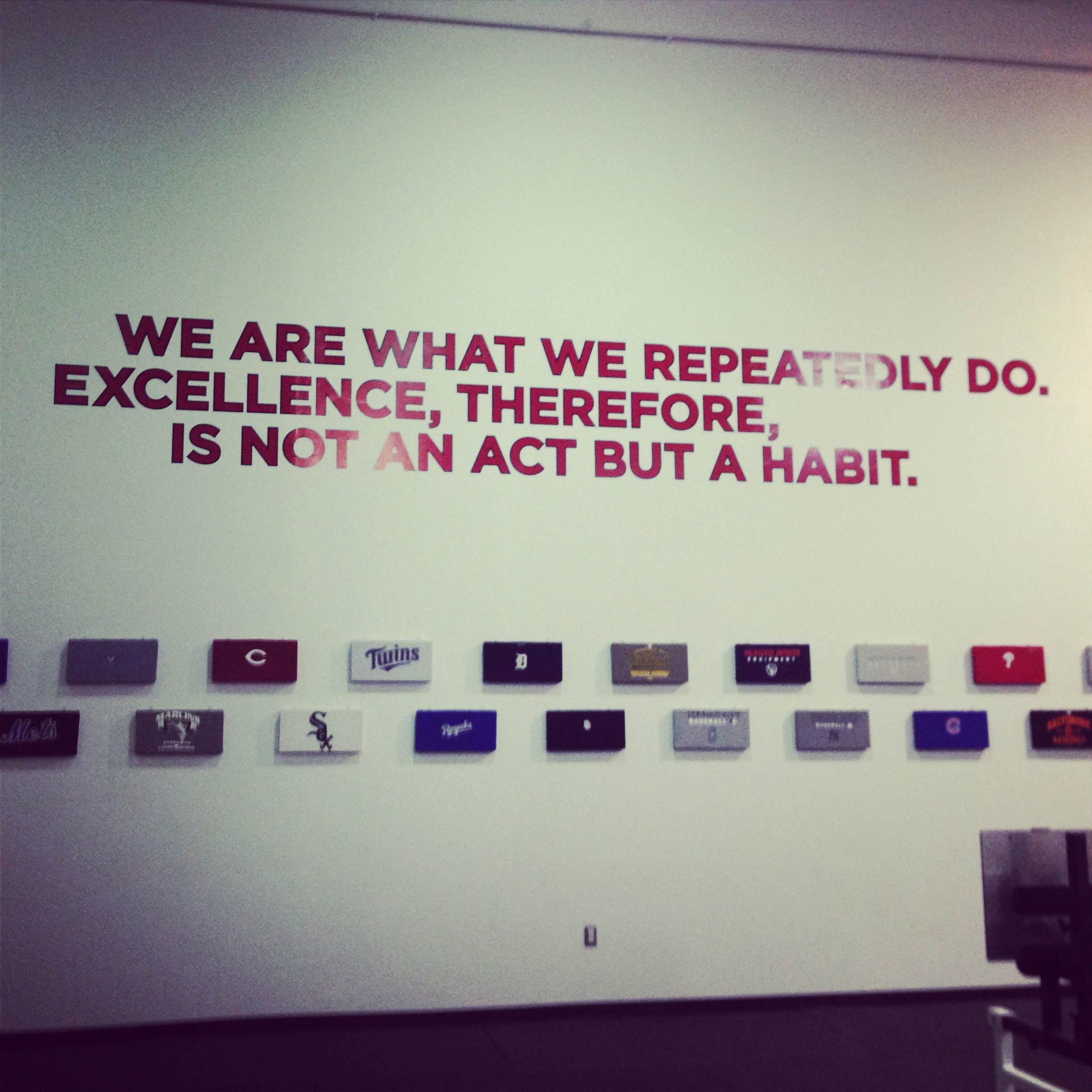I personally hate the term bootcamp as the connotation is that all participants are there to get yelled and screamed at and otherwise Full Metal Jacketed for an hour.
I find those instructors who rely on the drill sergeant approach tend to be compensating for a lack of differentiating their ass from their acetabulum1 In today’s guest post, Cressey Sports Performance strength camp coach, Frank Duffy, helps shed some light on a few lesser known factors that can help make your large group training classes more effective and enjoyable.

Large group training classes, commonly deemed bootcamps, often get a bad rap for the training they provide. Injuries and cases of exercise-induced health conditions, like rhabdomyolysis, are more prevalent than ever before. Sleep and nutrition play critical roles, but running ourselves into the ground day-in and day-out with our training is a surefire way to end up on the shelf injured over time.
Your training shouldn’t crush you. Plain and simple.
Quality over quantity, just like anything we do in life, is something I continuously hammer home to our Strength Camp members here at Cressey Sports Performance (CSP). While the program’s variables are entirely in our hands as coaches, there are other ways to dictate the intensity of training environment subtly.
1. Set the Tone Through Music
Nope, this isn’t a joke.
I have zero research to back this up, but I truly believe the music you have blaring through your speakers plays a huge role in regards to the intensity of your training floor. Powerlifters will always love their hardcore metal, the female high school athletes will always love their pop music, Tony Gentilcore will always love his Wu-Tang Clan and Tiesto.
Note from TG: Tony’s Techno Tuesdays will live on F.O.R.E.V.E.R
The CSP Strength Campers I work with are primarily in their late-30’s to mid-50’s, and don’t want Avenged Sevenfold blasting at 5:30 in the morning. Instead, we rock out to Bon Jovi, Bruce Springsteen, Pearl Jam… the list goes on.
It’s much less aggressive and music that most of our clients grew up with, making it much more enjoyable. It also helps that they tolerate my tone-deaf voice whenever Summer of ‘69 comes on.
Target the age range and musical interests of your clientele. It makes the training much more fun and shows them that it’s not about your own personal preference.
2. Preach the Importance of “Filler” Exercises
Our clients come to us for a kickass workout, not to sit through an hour of mobility exercises. However, I make sure that every training session entails one or two unloaded mobility drills as filler exercises to our heavier movements. My favorite way to do this is by implementing Controlled Articular Rotations (CARs) into the supersets prescribed.
I use CARs because they’re bodyweight movements that could be performed every single day without a single piece of equipment. It’s also a great way to learn how to control joint end-ranges of motion, where we typically get injured.
By getting clients to move through their end-ranges of motion in a controlled environment daily, we’re able to maintain and even expand our current mobility. Improved mobility equates to better movement with training and everyday life, why wouldn’t we want this? It’s important to hammer this point across to your clients, regardless of what route you take to improve their quality of life.
https://www.youtube.com/watch?v=IRoIFWyeEII&feature=youtu.be
Monday and Friday are our primary strength training days, where we’ll train the squat on Monday and deadlift on Friday. In between our warm-up sets, I’ll always prescribe shoulder or scapular CARs in order to improve our range and control with overhead movements. They’re also a great way to give the lower body rest in-between sets.
These slots aren’t just limited to CARs, though. I absolutely love dead bugs, plank variations, kettlebell pullovers, and other drills for core activation in between our heavy lifts. It’s important to avoid exercises that will crush your clients for their squats and deadlifts in these filler spots.
Here’s an example I’ll use for our Friday training sessions:
A1.) Deadlift 4×5
A2.) Standing Scapular CARs 3×2/side
A3.) Plank w/ Full Exhale 3×4 breaths
*A2 and A3 are performed during warm-up sets of the deadlift.
There’s a million different ways of going about this. Find what works best for your clients; it helps when they enjoy the exercises.
3. Talk to Your Clients
As cliche as it sounds, communication is key in all aspects of life. An important part of providing a great training experience to your clients is your ability to talk and learn about them. Everybody has a unique voice, and your job should be to listen to what each client has to say.
The ability to hold a conversation throughout a training session is also a great way to gauge how your clients are exerting themselves as well. Anything above 140 heart beats per minute is typically above the threshold in which normal conversation could no longer be held. This is a zone I’ll stray away from for long durations. As fatigue kicks in, form likes to go out the window.
Note From TG: Do you know your client’s spouse’s name? Pets’ names? Do you know their favorite movie or television show? Do they know where the term “cottenheadedninnymuggins” comes from?
TALK TO THEM!
I try to target 110 to 140 beats per minute with our Wednesday circuit training, which is a sustainable zone for longer periods of time. It’s also what our industry considers the “sweet spot” for improving overall aerobic capacity.
Our clients aren’t equipped with heart rate monitors, so assessing their ability to hold small talk is my judgement tool for how they’re exerting themselves. If you don’t have monitors at your disposal, I highly suggest you do the same.
Large group does not correlate with extremely high-intensity training modalities. Just like private, and semi-private models, your large group training service will produce much greater results when you stray away from running your attendees into the ground. Of course, you’ll always have your fitness junkies that want to give 110% effort every session. It’s our job to explain to them the importance of submaximal training’s benefits, and how exercise is only a sliver of the pie.
If you’re not sleeping adequately, eating properly, maintaining stress levels that life’s situations throw at you, can you really overcome these obstacles with a training session that leaves you crawling out the door?
I’d argue not.
Making your clients better isn’t entirely about the time they spend with you lifting iron. Make it a point to talk to them about their sleep patterns, maybe ask what they had for dinner last night, when was the last time they took note of the color of their pee?, or, I don’t know, maybe discuss the last episode of The Walking Dead. All of it is information that not only will help you help them, but will also build a better sense of camaraderie.
Author’s Bio
Frank Duffy is the Head Coordinator of Strength Camps at Cressey Sports Performance. As a Functional Range Conditioning Mobility Specialist (FRCms) and Precision Nutrition Level One Nutrition Coach (Pn1), Frank tries to tailor the program around longevity through optimal movement and nutrition habits. You can learn more though his website, www.frankduffyfitness.com and his Instagram account…HERE.


 Sports Performance Strength Camp officially launched three years ago and started with only two clients.
Sports Performance Strength Camp officially launched three years ago and started with only two clients.
